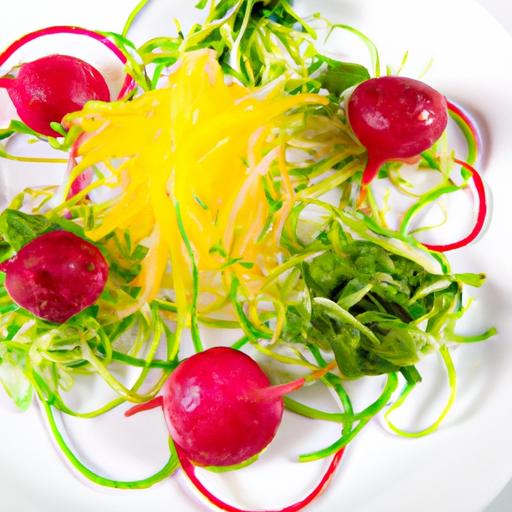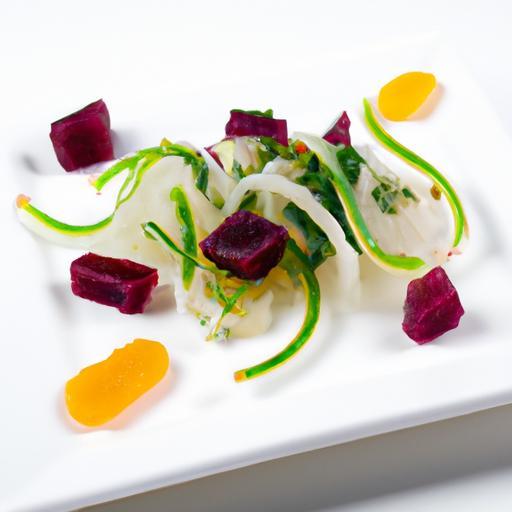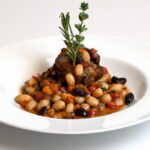In the quest for the perfect crunch, nothing quite matches the exhilarating snap of crisp vegetables fresh from the fridge. But what if the secret to that irresistible texture isn’t just in the freshness, but in the chilling method itself? Welcome to the world of chilling choices-a fascinating exploration of unexpected, even shocking techniques that transform ordinary veggies into extraordinary bites. From icy baths to flash freezing, these methods do more than just cool; they unlock new dimensions of crunch, flavor, and freshness. Join us as we delve into the science and art behind chilling veggies to perfection, revealing how a little cold can bring out the very best in your greens.
Chilling Choices: Exploring Shocking Methods for Crisp Veggies
When it comes to achieving unparalleled crispness in your vegetables, chilling choices are where culinary science meets artistry. Unlocking the secrets behind vegetable texture through innovative cooling techniques can transform your dishes from ordinary to extraordinary, offering a fresh snap and crunch that excites the palate. Originating from both traditional and avant-garde kitchens, these methods emphasize the importance of temperature in preserving freshness and enhancing bite, bringing you closer to the garden’s original vitality.
Prep and Cook Time
- Prep: 15 minutes
- Cooling/Resting: 1 to 3 hours (varies by method)
- Total Time: Up to 3 hours 15 minutes
Yield
Serves 4 as a fresh side or garnish element
Difficulty Level
Easy to Medium – perfect for home cooks looking to elevate their veggie game with chilling chemistry.
Ingredients
- 2 large cucumbers, peeled and sliced into ¼-inch rounds
- 4 large carrots, peeled and julienned
- 1 cup ice water
- ½ cup crushed ice
- 2 tbsp sea salt (for soaking)
- 1 tbsp apple cider vinegar
- Fresh herbs (such as dill or mint) for garnish
- Optional: 1 tsp sugar (to balance earthy flavors)
Instructions
- Prepare the brine: Combine 1 cup of ice water, sea salt, and apple cider vinegar in a large bowl. Stir until the salt is fully dissolved to create a chilled brine.
- Soak the vegetables: Add the sliced cucumbers and julienned carrots to the brine. Submerge completely and cover the bowl with plastic wrap. Refrigerate for 1 hour to allow the chilling chemistry to firm up each vegetable’s cell walls, locking in crispness.
- Ice shock treatment: Drain the soaked vegetables and immediately transfer them into a bowl filled with crushed ice and a splash of cold water. Leave for 10-15 minutes-this crucial step resets the vegetable fibers, creating an electrifying snap with every bite.
- Drain thoroughly: Remove vegetables from the ice water and gently pat dry with paper towels to avoid sogginess.
- Optional sweet balance: If desired, sprinkle vegetables with a light dusting of sugar and toss to evenly coat. This subtle addition tempers earthy notes and enhances natural sweetness.
- Serve chilled: Place your perfectly crisp vegetables on a serving platter, garnish with fresh herbs like dill or mint, and enjoy immediately for the ultimate fresh crunch experience.
Tips for Success
- Use fresh, firm vegetables: The chilling choices you make start with quality produce; older veggies won’t snap as well even with advanced chilling.
- Maintain consistent ice temperature: The ice shock method works best when water temperature stays near freezing; experiment with crushed vs. cubed ice for different effects.
- Control soaking time: Over-soaking in salty brine can lead to excess saltiness-start with 1 hour and adjust based on vegetable density.
- Try different veg: Experiment with bell peppers, jicama, or fennel using these chilling techniques for unique textures.
- Make ahead: Vegetables can be prepped and chilled up to 4 hours in advance but serve promptly to maximize crispness and texture.
Serving Suggestions
These crisp veggies shine as refreshing sides to grilled proteins or as vibrant elements atop salads and bowls. Layer textures by pairing with creamy dips like tzatziki or hummus. Finish with a sprinkle of toasted sesame seeds or microgreens for visual appeal and textural contrast. Serve on chilled platters to extend the cooling effect and keep the crunch long-lasting.

| Nutrient | Amount per Serving |
|---|---|
| Calories | 45 kcal |
| Protein | 1.2 g |
| Carbohydrates | 10 g |
| Fat | 0.1 g |
Enhance your chilling choices even further by diving into our perfect vegetable prep techniques. For scientific insights on vegetable texture, visit Scientific American’s exploration of crispness.
Q&A
Q&A: Chilling Choices – Exploring Shocking Methods for Crisp Veggies
Q1: What does “shocking” mean when it comes to veggies?
A1: In culinary terms, “shocking” is the chilly aftermath of blanching-where you plunge cooked or partially cooked vegetables into ice-cold water. This rapid cooling halts the cooking process instantly, locking in that coveted crispness and vibrant color. It’s like giving your veggies a refreshing icy plunge after a warm bath!
Q2: Why is shocking veggies important? Can’t I just skip it?
A2: Skipping the shock means your veggies might keep cooking, turning limp and mushy instead of delightfully crisp. Shocking sets their texture in stone (or rather, in ice), preserving that satisfying crunch and keeping nutrients intact. Plus, it brightens the veggie’s natural hues, making your dish as eye-catching as it is tasty.
Q3: What vegetables benefit the most from shocking?
A3: Crunch champions like green beans, asparagus, carrots, broccoli, and snap peas love a cold shock. Leafy greens such as spinach and kale can also benefit to stop their wilting mid-blanch. Even potatoes get a crisp edge when quickly cooled after parboiling.
Q4: Are there different shocking methods to try?
A4: Certainly! The classic ice bath is the go-to-lots of ice cubes in cold water for a quick submerge. Some adventurous chefs use chilled salted water to subtly enhance flavor or even shock veggies in an ice-salt brine for an intense chill. For quick crispness, you might also experiment with an instant rinse under cold running water, though the ice bath is king.
Q5: How long should veggies stay in the ice bath?
A5: Timing is key! Usually, a minute or two is perfect-long enough to stop cooking but not so long the veggies turn waterlogged. Thicker veggies may need a bit longer; delicate greens just a quick dip. Keep an eye on color and texture; once they look bright and springy, they’re ready to be drained.
Q6: Can shocking be used for preservation?
A6: Absolutely. Before freezing, shocking veggies preserves texture and color remarkably well. It’s a cold-time capsule for freshness, preventing enzymatic browning and texture breakdown during storage. So your frozen veggies can retain that fresh-picked crispness long after harvest.
Q7: Any creative tips for using shocking in everyday cooking?
A7: Try shocking as a prep step for crudité platters-your veggies stay juicy and crisp for snacking. It’s also perfect before stir-frying to keep that satisfying bite. And next time you roast veggies, blanch and shock first to achieve a tender middle with a crunchy snap on the outside.
–
Chilling to perfection isn’t just about temperature-it’s about texture, taste, and turning ordinary vegetables into culinary stars. With these shocking methods, crispness is just a splash away!
Key Takeaways
As we’ve uncovered, chilling isn’t just a step in the veggie prep process-it’s an art form packed with surprising techniques that transform ordinary crunch into extraordinary crisp. From icy baths to innovative freezing tricks, these methods unlock a fresh, vibrant texture that makes every bite a revelation. So next time you reach for those greens, remember: the secret to ultimate crispness might just lie in the cold. Embrace the chill, experiment boldly, and let your veggies crunch louder than ever before.


